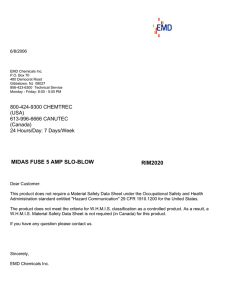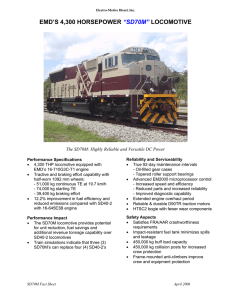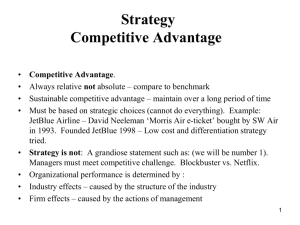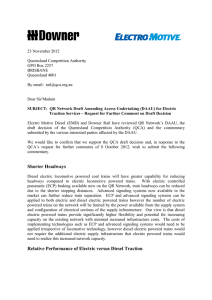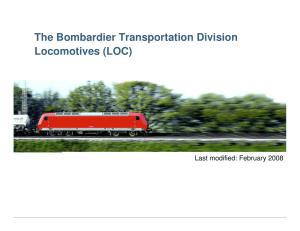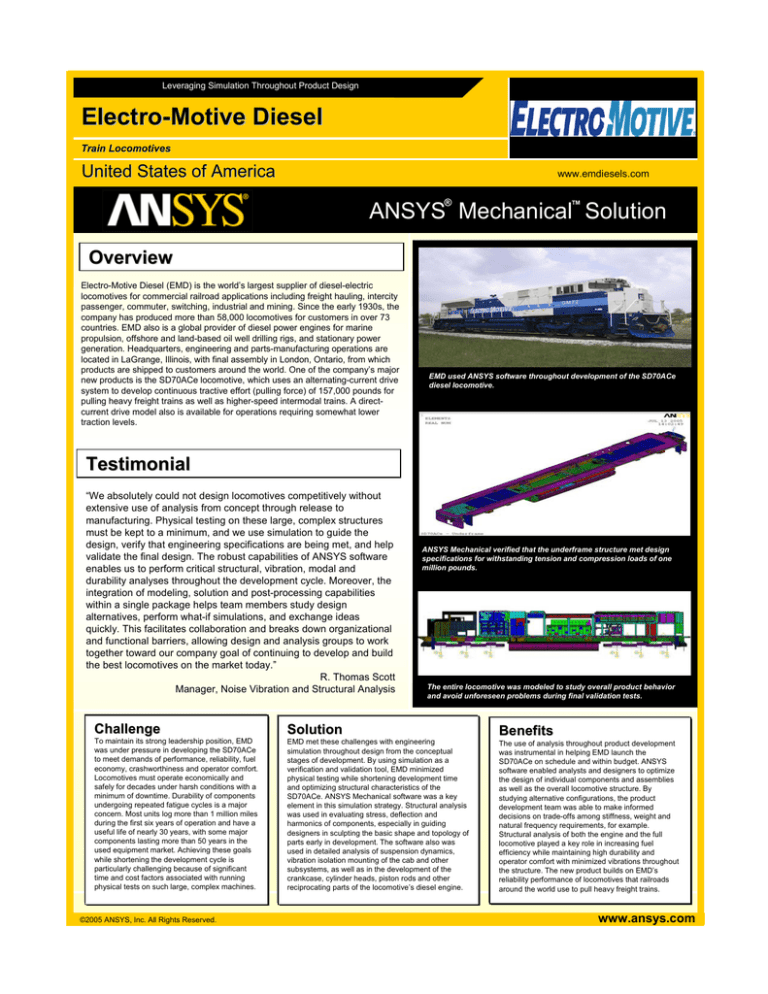
Leveraging Simulation Throughout Product Design
Electro-Motive Diesel
Train Locomotives
United States of America
www.emdiesels.com
®
ANSYS Mechanical™ Solution
Overview
Electro-Motive Diesel (EMD) is the world’s largest supplier of diesel-electric
locomotives for commercial railroad applications including freight hauling, intercity
passenger, commuter, switching, industrial and mining. Since the early 1930s, the
company has produced more than 58,000 locomotives for customers in over 73
countries. EMD also is a global provider of diesel power engines for marine
propulsion, offshore and land-based oil well drilling rigs, and stationary power
generation. Headquarters, engineering and parts-manufacturing operations are
located in LaGrange, Illinois, with final assembly in London, Ontario, from which
products are shipped to customers around the world. One of the company’s major
new products is the SD70ACe locomotive, which uses an alternating-current drive
system to develop continuous tractive effort (pulling force) of 157,000 pounds for
pulling heavy freight trains as well as higher-speed intermodal trains. A directcurrent drive model also is available for operations requiring somewhat lower
traction levels.
EMD used ANSYS software throughout development of the SD70ACe
diesel locomotive.
Example Images here
Testimonial
“We absolutely could not design locomotives competitively without
extensive use of analysis from concept through release to
manufacturing. Physical testing on these large, complex structures
must be kept to a minimum, and we use simulation to guide the
design, verify that engineering specifications are being met, and help
validate the final design. The robust capabilities of ANSYS software
enables us to perform critical structural, vibration, modal and
durability analyses throughout the development cycle. Moreover, the
integration of modeling, solution and post-processing capabilities
within a single package helps team members study design
alternatives, perform what-if simulations, and exchange ideas
quickly. This facilitates collaboration and breaks down organizational
and functional barriers, allowing design and analysis groups to work
together toward our company goal of continuing to develop and build
the best locomotives on the market today.”
R. Thomas Scott
Manager, Noise Vibration and Structural Analysis
ANSYS Mechanical verified that the underframe structure met design
specifications for withstanding tension and compression loads of one
million pounds.
The entire locomotive was modeled to study overall product behavior
and avoid unforeseen problems during final validation tests.
Challenge
Solution
To maintain its strong leadership position, EMD
was under pressure in developing the SD70ACe
to meet demands of performance, reliability, fuel
economy, crashworthiness and operator comfort.
Locomotives must operate economically and
safely for decades under harsh conditions with a
minimum of downtime. Durability of components
undergoing repeated fatigue cycles is a major
concern. Most units log more than 1 million miles
during the first six years of operation and have a
useful life of nearly 30 years, with some major
components lasting more than 50 years in the
used equipment market. Achieving these goals
while shortening the development cycle is
particularly challenging because of significant
time and cost factors associated with running
physical tests on such large, complex machines.
Benefits
EMD met these challenges with engineering
simulation throughout design from the conceptual
stages of development. By using simulation as a
verification and validation tool, EMD minimized
physical testing while shortening development time
and optimizing structural characteristics of the
SD70ACe. ANSYS Mechanical software was a key
element in this simulation strategy. Structural analysis
was used in evaluating stress, deflection and
harmonics of components, especially in guiding
designers in sculpting the basic shape and topology of
parts early in development. The software also was
used in detailed analysis of suspension dynamics,
vibration isolation mounting of the cab and other
subsystems, as well as in the development of the
crankcase, cylinder heads, piston rods and other
reciprocating parts of the locomotive’s diesel engine.
The use of analysis throughout product development
was instrumental in helping EMD launch the
SD70ACe on schedule and within budget. ANSYS
software enabled analysts and designers to optimize
the design of individual components and assemblies
as well as the overall locomotive structure. By
studying alternative configurations, the product
development team was able to make informed
decisions on trade-offs among stiffness, weight and
natural frequency requirements, for example.
Structural analysis of both the engine and the full
locomotive played a key role in increasing fuel
efficiency while maintaining high durability and
operator comfort with minimized vibrations throughout
the structure. The new product builds on EMD’s
reliability performance of locomotives that railroads
around the world use to pull heavy freight trains.
©2005 ANSYS, Inc. All Rights Reserved.
www.ansys.com

